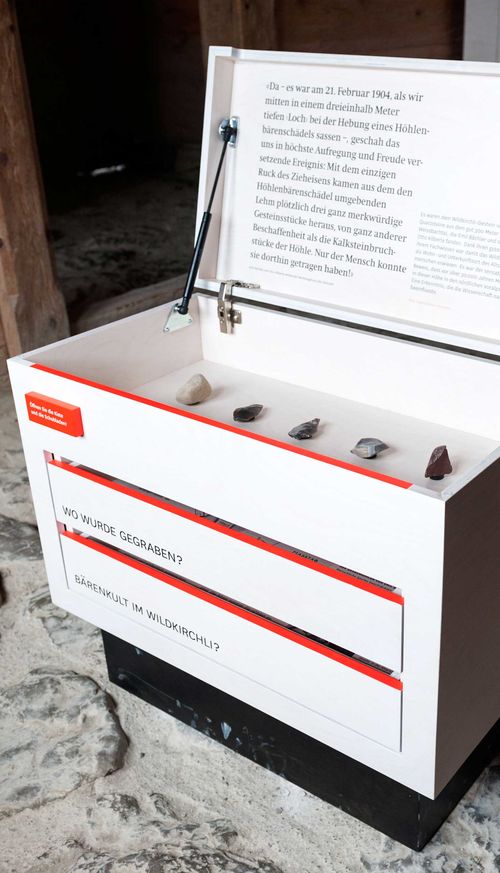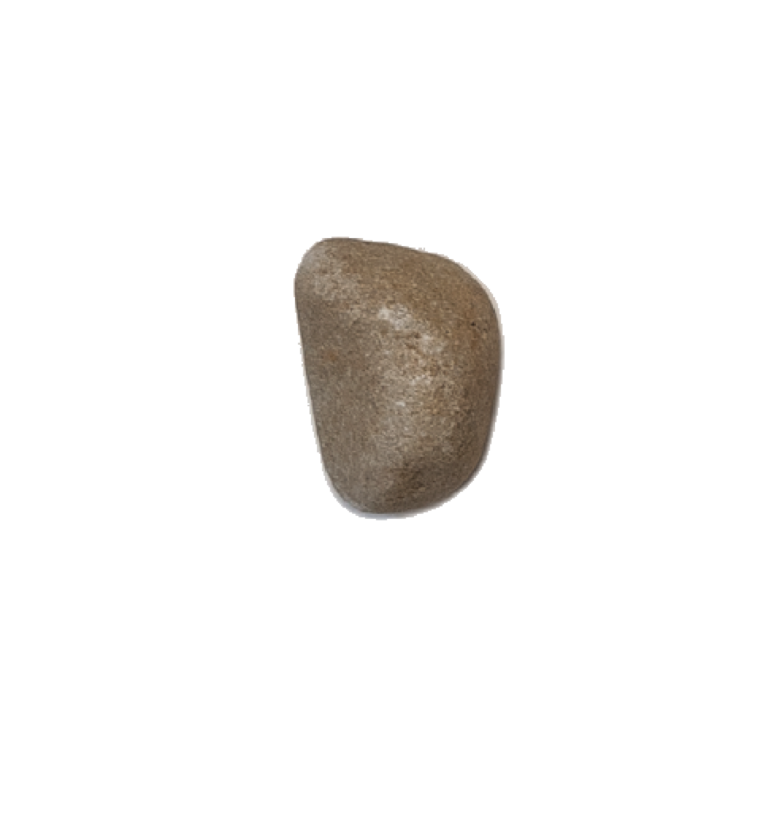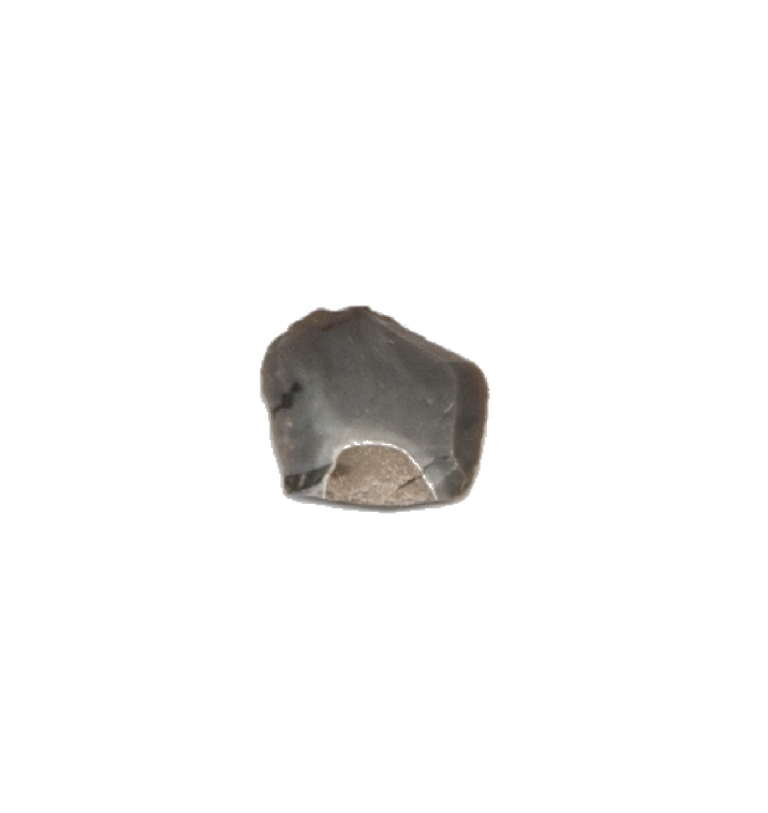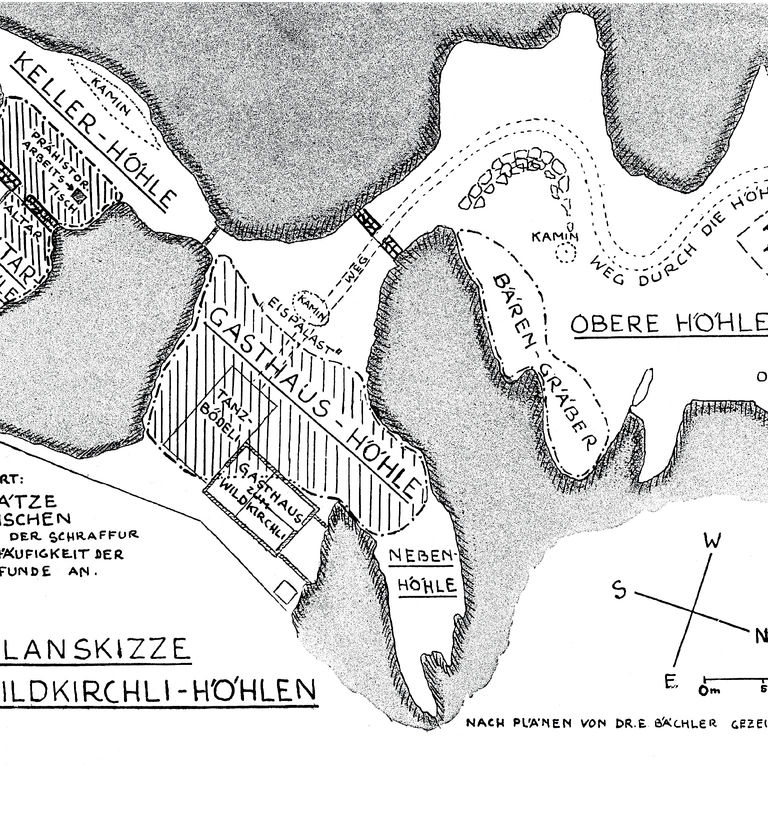It was quartz from the Weissbach valley, entirely foreign to the rock in the Wildkirchli and located 300 meters below, that Emil Baechler and his assistant Otto Koeberle found. Thanks to their sharp eyes and expertise, the Wildkirchli was thus proven to be a place of living and shelter for Paleolithic humans. It was the sensational first proof that, over 30,000 years ago, people lived at this altitude in the northern Alpine foothills. A realization that had a lasting influence on the scientific community.
Please close the box lid.
Where had been dug?
Bear cult in the Wildkirchli?
Humans as cave bear hunters. Emil Baechler found bones that he believed to have been worked into tools by human hands. This, and that the fact that traces of human activity and cave bears lay in the same layers of earth, led him to the assumption that humans must have hunted and killed cave bears. An image of Stone Age humans that was widely disseminated throughout the scientific community of the time.
But Emil Baechler went even further: Between 1917 and 1923 in Vaettis’ Drachenloch cave, he found piles of bones and intact bear skulls. Some of these were carefully placed in recesses in the stone or between stoneslabs – Baechler called these Schädelsteinkisten (stone skull ossuaries) –and arranged in a uniform manner. He interpreted these findings as the remnants of human cult-like activity, a homage to the cave bears or a sacrifice. Going beyond the archeological evidence, he formulated his theory of the bear cult using ethnographic comparisons and religious and philosophical considerations.
The theory brought about a years-long dispute in the scientific community, extending to personal animosity towards Baechler. Nonetheless, Emil Baechler stood by his interpretation for the rest of his life.
Schmid’s refutation of the bear cult. During the excavations in 1958/59, Elisabeth Schmid fundamentally confirmed Baechler’s findings. However, on the basis of more developed research methods and newscientific insights, she came to the conclusion that humans and bears seldom encountered one another. The bears used the caves to hibernate in the winter, the humans in the summer as rest areas. In addition, the weapons of the Stone Age humans were poorly suited for hunting the large cave bears. Elisabeth Schmid also identified the traces of handworking on the supposed bone tools as natural weathering.
With that, the theory of the bear cult was finally refuted.








